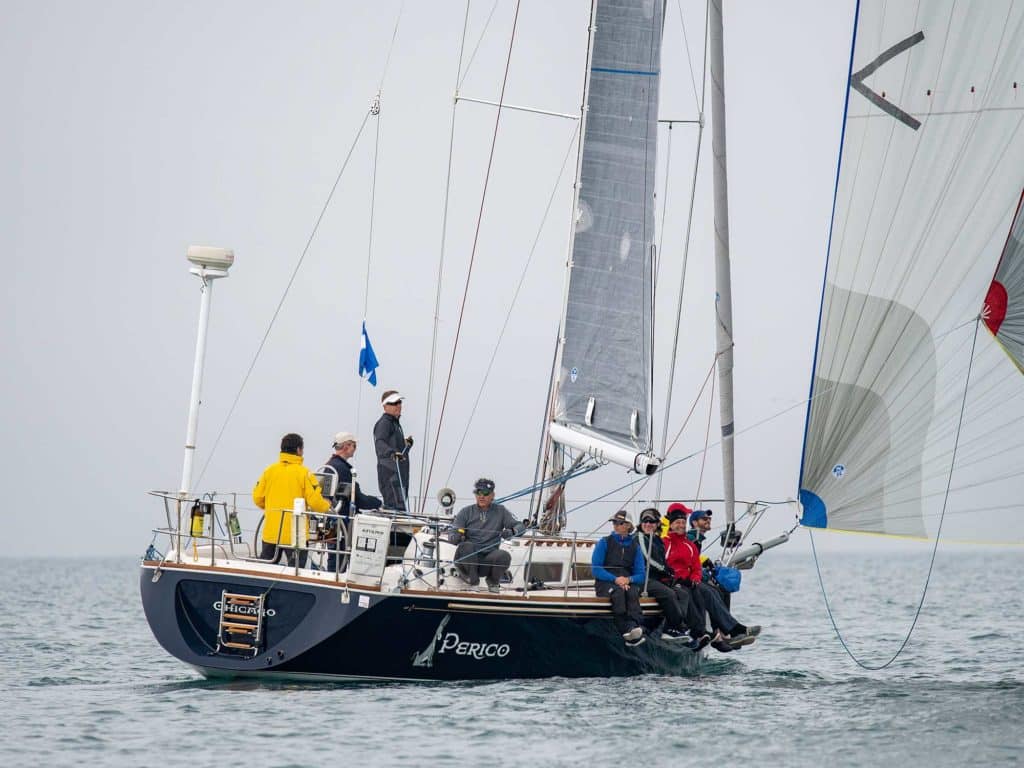
Last summer, I had a chance to sail in a local Wednesday night race with some friends I had not seen in a while. They have a PHRF boat they sail in the jib and main class, and although their priority for being out is to have fun, they also are all very competitive. When I joined them, one of their first comments was, “You gotta help us. How do we know what angle to sail downwind?”
I asked what they meant, and they said, “We like to keep the boat moving, so we kind of reach around a bit with the jib, and all these other boats just put the main on one side, the jib on the other, have a cocktail and go straight downwind. We can’t tell what’s fastest because it’s handicap racing.”
They had minimal instruments aboard so I needed to come up with a way to figure this out and to do it quickly with less than 20 minutes to the start! That evening, the wind was around eight or nine knots, perfect for making some trial runs at different downwind angles. I turned the GPS on my phone to get speed over the ground. They had no true-wind angle instrument, which wasn’t a big deal because we were only trying to pick the best mode and not an absolute best angle for the wind speed.
We headed downwind wing on wing. Our first run was about 5 to 10 degrees above dead downwind. At your deepest angle you never want to go dead downwind—either a bit by the lee or just above dead down. This ensures you always have flow over the sails. Flow either way generates more thrust than stalled. We looked up at the Windex and figured out what dead downwind was and noted this heading. Then we headed up 5 to 10 degrees and watched the telltales all over the sail for flow. Once we had achieved flow at this deep angle, we noted the heading and the difference from our dead-down heading—8 degrees. We sailed this angle for a minute, watching our boat speed, following the wind up and down a bit and settled in at roughly 4.2 knots, with the sails wing on wing.
Next, we turned the bow up roughly 20 degrees, moved the jib to the leeward side of the boat, again watching telltales for flow across the sail and did the same thing. Our heading was now 30 degrees above our dead-downwind heading, and our speed was now roughly 5.2 knots. We had all the info we needed to find which mode was better. The pressure was on with eight minutes to the start. I just needed to remember a little high school math and how to make my iPhone turn into a scientific calculator (hint: open the calculator and turn it on its side).
I plugged the numbers into this formula: (Boat speed at 8 degrees above dead downwind) x COS (the degrees above dead downwind) = VMG: 4.2 x COS (8) = 4.16 (VMG) (Boatspeed at 30 degrees above dead downwind) x COS (30) = VMG: 5.2 x COS (30) = 4.5 (VMG).
As you can see, our reaching mode had a better VMG downwind, so in this wind speed, it was better to sail at roughly 30 degrees above dead downwind than wing-on-wing. Question answered, just in time. We were in our starting sequence.
The cool thing is that this will work on any boat—jib and main, spinnaker, asymmetric. All you need is a GPS or knot meter, and a smart-phone calculator.
The best downwind mode for your boat will change as the wind increases. At the basic level, you need angles in just three different wind speeds—the first in winds around 6 knots, since going dead downwind in really light air just doesn’t work. Then, record another test when your sails can stay pressurized at a deep angle. Depending on your boat, this will happen between 7 to 11 knots. Finally, do another set of angles when it’s windy.
Armed with these general downwind guidelines, you can take a lot of the guesswork out of which angle has the best performance in light, medium and windy conditions. This process does not include the “cocktail factor,” of course, which will heavily favor the wing-on-wing angle in all conditions!









